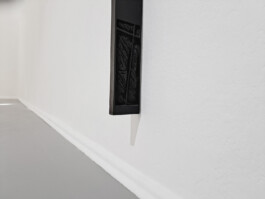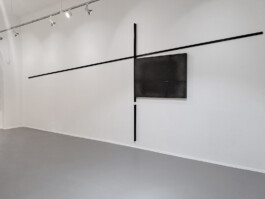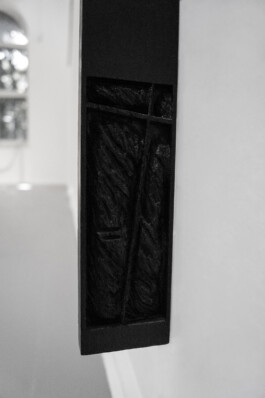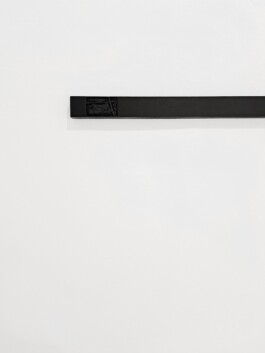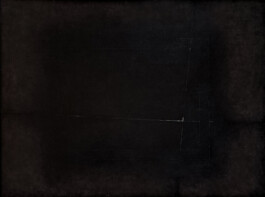
I ONLY WORK WITH LOST AND FOUND _____ 31.09.2024 – 09.11.2024
Kunstraum Kreuzberg /Bethanien, Berlin, DE
The works of Sofiia Yesakova are inspired by statistical diagrams, information technology and constructivism. She also uses the technique of icon painting for her paintings, without figuration or religiosity, with gesso, many layers of gelatine and wood. In Cargo 200 Experimental projections on surfaces 5.8., Yesakova creates a seven metre long architectural wall intervention. In it, she refers to Malevitch's black square; in contrast to minimalist abstraction, her work is a carrier of almost unbearable emotionality.
The work deals with war as a phenomenon: Cargo 200, the military's term for transports of fallen soldiers back home, in a zinc container. The black square here is the place of burial, seen from above. Yesakova's meticulous painting is situated in the field of tension between abstract form and oppressive context. It is a work of remembrance and mourning. By devoting herself to violence with almost mathematical precision, Yesakova makes the unbearable visible.
In Cargo 200. Experimental Projections on Surfaces 5.8., the long wooden elements reference the visual vocabulary of Constructivism. This style, once tied to a belief in collective transformation, appears here not as an active structure but as its remainder. These are no longer building elements. They are fragments. Instead of a promise, we see the trace of something left unfinished. The composition borrows from the logic of icon painting, but without figures, without faces. At the center is a black square not a metaphysical symbol, but a marker of absence. It functions as a grave, both literal and metaphorical. The viewer sees no clear identities, no names, just the faint outlines of coffins from an overhead perspective. This is not a representation of a specific event, but a broader reflection on war as a process that erases not only bodies, but memory.
The Constructivist connection is deliberate. A style that once aimed to shape a new world through formal clarity and collective ideals now reappears emptied of content. The forms persist, but the vision behind them has faded. This tension between lasting form and disappearing meaning is where the work draws its quiet power. It does not offer judgment, but shows how aesthetic language can survive the failure of ideology, and how form may carry memory when nothing else remains.
Curated by Hannah Kruse and Mona Mousse
Text by Hannah Kruse and Sofiia Yesakova
Group exhibition
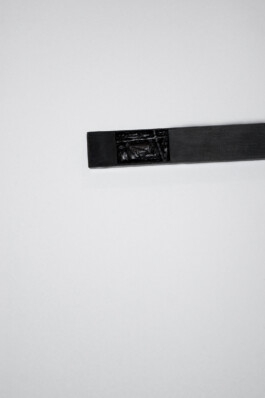
Cargo 200. Experimental projections on surfaces. 5.8., 700 × 3 × 2 cm, pine wood planks with carving, 2024. Close-up
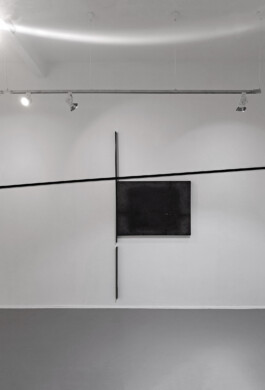
Cargo 200. Experimental projections on surfaces. 5.8., 145 × 110 × 7 cm, variable dimensions (pine wood planks), acrylic, gesso and wood board, pine wood planks with carving, 2024
